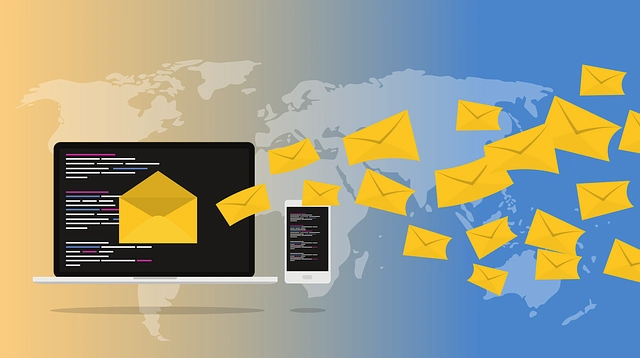Table of Contents[Hide][Show]
- Key Takeaways
- Unlocking the Secrets to High Open Rates
- Email Marketing Metrics to Watch
- Summary
Frequently Asked Questions+−
- What role does personalization play in email subject lines?
- How can I avoid my emails being flagged as spam?
- What is A/B testing and how can it help improve my email open rates?
- How can I incorporate humor into my subject lines?
- Can emojis in subject lines improve open rates?
- How does the length of an email subject line impact open rates?
Discover the strategies behind good email subject lines that get opened. With no-nonsense advice and real-world examples, our guide zeroes in on what works—personalization, urgency, and the psychological triggers that ensure your emails stand out. Prepare for actionable digital marketing insights that you can use immediately, all laid out clearly and concisely, that readies you for quick wins in your next campaign.
Key Takeaways
Craft email subject lines that captivate through personalization, spark curiosity, and convey urgency to boost open rates significantly.
To improve email engagement, keep subject lines concise, prioritize clarity over cleverness, and avoid language that might trigger spam filters.
Regularly perform A/B testing and analyze metrics like open and unsubscribe rates to optimize email campaigns and drive better results.
Unlocking the Secrets to High Open Rates
Email subject lines just like article headlines are important because they are the first thing recipients see and can impact whether the email gets opened or not. A compelling subject line can increase open rates and engagement regardless of your goals from automated customer follow up emails to complex nurturing campaigns from prospects. Crafting a great subject line is crucial for maximizing open rates and ensuring higher engagement with your email campaigns.
The answer lies in the short amount of time we spend evaluating them. Most people spend only a fraction of a second scanning email subject lines, quickly deciding whether the message is worth their time. This makes the art of crafting compelling email subject lines essential for the success of your email marketing campaigns.
Understanding the open rate and the percentage of recipients who open your email is a critical metric in email marketing. It provides valuable insights into the quality of your email list and, most importantly, the effectiveness of your email subject lines. High open rates indicate that your subject lines are resonating with your audience, prompting them to engage with your message.
Crafting Subject Lines That Demand Attention

Creating email subject lines that demand attention is a fine art. It’s about striking the perfect balance between personalization, curiosity, and urgency.
Let’s explore each of these elements in more detail.
The Power of Personalization
Personalization is the golden key to email marketing. It’s what makes your emails feel more relevant and unique to the recipient, thus significantly increasing open rates. This can be as simple as using the recipient’s name or referencing their interests in your email subject lines, a practice that makes emails 22% more likely to be opened.
But personalization doesn’t stop at names and interests. It can also involve:
casual language
sharing something personal
suggesting familiarity or friendship
referring to recent interactions or next steps
Even these small personal touches can make your email more compelling, leading to higher open rates.
It’s about making the recipient feel seen and understood, which in turn makes them more likely to engage with your email.
Curiosity as a Catalyst
Did you know that curiosity can be a powerful motivator? It’s a natural human trait that can be leveraged to increase your open rates. By creating a sense of mystery or posing a question in your subject line, you’re stimulating the recipient’s curiosity and compelling them to open your email to find out more.
For instance, using phrases that evoke mystery, such as ‘Feeling blue? Like baby pandas?’, can effectively enhance curiosity. This approach hooks the recipient, making them more willing to hear out what you have to say. So, don’t be afraid to tap into your recipient’s curiosity, as addressing their pain point might just be the ticket to boosting your open rates.
Urgency and Exclusivity
Urgency and exclusivity are two powerful tools in your email marketing toolbox. By creating a sense of urgency in your subject lines, you’re encouraging your subscribers to act promptly. This can be achieved by using specific cues such as ‘URGENT’, ‘PLEASE READ’, or ‘REPLY NEEDED BY 10am’.
Similarly, offering exclusive deals or discounts can stimulate a sense of privilege in your subscribers, prompting them to open your email to take advantage of the offer. Both these strategies tap into the fear of missing out, a potent motivator that can significantly increase your open rates.
Anatomy of Successful Email Subject Lines
Crafting successful email subject lines is not just about grabbing attention. It’s also about providing a clear snapshot of the email’s content and presenting a solution to a problem. Let’s delve into three key components of effective subject lines: brevity, clarity, and avoiding spam triggers.
Brevity is the Soul of Wit
In the world of email marketing, less is often more. Brevity is key when crafting your email subject lines. In fact, subject lines with 50 characters or less result in 12% higher open rates and 75% higher click-through rates than longer ones.
Why is this? Well, consider the fact that most people open emails on their mobile devices. Mobile screens can only display a limited number of characters, so a lengthy subject line might get cut off. Ideally, you should aim for no more than 30 characters for mobile devices and up to 60 characters for desktops and laptops. Striking a balance between brevity and clarity ensures better open rates.
Clarity Over Cleverness
While it can be tempting to come up with a clever or witty subject line, clarity should always be your top priority. B2B companies employing straightforward subject lines paired with valuable content can effectively convert, reflecting in open rates ranging between 60-87%.
Direct and descriptive subject lines that outline the benefits of promotions or specific deals tend to be more successful than trendy or vague ones. Moreover, being transparent in communication by clearly stating the desired action of the business in the subject line can gain the recipient’s trust.
For example, a subject line like ‘Try [product/service] for free’ removes the perceived risk of trying a new product or service, making it more likely for the recipient to open your email.
Avoiding the Spam Trap
Last but not least, you want to make sure your carefully crafted email doesn’t end up in the spam folder. To avoid this, you need to steer clear of spam trigger words and phrases such as ‘free gifts’, ‘marketing gimmicks’, and similar schemes.
Using exaggerated claims such as ‘100% free’, ‘100% cashback’, and ‘get rich quickly’ also increases the likelihood of your emails being flagged as spam. Similarly, using all caps in email subject lines can trigger spam filters, as it is commonly associated with spam content. So, be cautious when crafting your subject lines and stick to the principles of clarity, brevity, and relevance to ensure your emails land in your recipient’s inbox, not their spam folder.
The Psychology Behind Email Engagement

Now that we’ve covered the basics of crafting compelling subject lines, let’s delve a little deeper into the psychology behind email engagement. Understanding these psychological principles can help you create subject lines that truly resonate with your audience.
Tapping Into Emotions
Emotion is a powerful driver of human behavior, and it’s no different when it comes to email marketing. Subject lines that evoke emotions have been shown to achieve higher open rates compared to those without emotional triggers.
For example, a funny or witty subject line can get people excited to open your emails, sparking their interest and making them laugh. So, don’t be afraid to tap into your recipient’s emotions when crafting your catchy email subject lines. It might just be the key to unlocking higher open rates.
The Principle of Social Proof
Social proof is a psychological concept that individuals are influenced by the behaviors and approvals of others, especially in uncertain situations. In the context of email marketing, this can be leveraged to enhance trustworthiness and credibility in your subject lines, leading to higher open and engagement rates.
For instance, incorporating customer testimonials or user-generated social media content in your email subject lines contributes to building trust, prompting recipients to open your email. So, next time you’re crafting an email subject line, consider how you can incorporate elements of social proof to boost your open rates.
The Fear of Missing Out (FOMO)
The Fear of Missing Out (FOMO) is a common psychological trigger that can effectively be harnessed to drive engagement in your email marketing campaigns. By suggesting a time-limited offer or exclusive opportunity in your subject line, you can capitalize on the principle of FOMO to motivate recipients to open your emails promptly.
Top brands often utilize this principle in their subject lines by incorporating a sense of scarcity or urgency, which has been shown to increase email open rates. So, if you’re looking for a way to prompt quick action from your subscribers, consider leveraging the power of FOMO in your subject lines.
Subject Line Strategies from Top Brands

When it comes to crafting effective email subject lines, there’s much we can learn from top brands. These brands have mastered the art of capturing attention and driving engagement through their subject lines. Let’s take a look at some of their strategies.
Lessons from E-commerce Giants
E-commerce giants are known for their effective email marketing strategies. One key element of their success is their subject lines, including sales email subject lines. They understand that different types of emails require different subject lines. For instance, welcome emails aim to establish a strong initial connection with subscribers, reinforcing their decision to engage with the brand.
For newsletters, subject lines should provide regular updates and valuable content, promoting continued engagement and fostering brand loyalty. And for retargeting emails, subject lines are strategically designed to recapture the attention of subscribers who have abandoned their carts or failed to follow through on an intended purchase, guiding them back into the sales funnel. Understanding the purpose of your email and tailoring your subject lines accordingly is key to driving engagement and conversions.
B2B Mastery: Professional Email Subject Lines
In the B2B world, professional email subject lines take center stage. Unlike B2C emails, which often utilize humor or catchy phrases, B2B emails are typically straightforward and focused on professional engagements.
For example, follow-up email subject lines serve to remind the recipient of a previous interaction or to continue engagement after a meeting. Using a specific subject like ‘Requesting a meeting on [Day]’ clearly communicates the email’s intent. Similarly, introduction email subject lines, cold email subject lines, and personal email subject lines aim to spark interest and initiate dialogue with prospects who are not currently engaged with the business.
Tailoring your subject lines to specific events or inquiring if you’ll see a prospect at an upcoming event can create a personal touch and relevance to the recipient.
Creative Flair: Funny Email Subject Lines
Injecting humor into your subject lines can be a great way to stand out in a crowded inbox. A funny email subject line can capture a prospect’s attention, making them more likely to give your email a second look.
But humor should be used carefully. The key is to know your audience and ensure that your humor aligns with your brand voice. You want your humor to enhance the connection with your audience, not to alienate or confuse them.
So, don’t be afraid to inject some creative flair into your subject lines, but always make sure it’s in line with your brand and audience preferences.
Testing and Optimizing Your Email Subject Lines

Crafting compelling email subject lines is an art, but it’s also a science. By testing and optimizing your craft subject lines, you can ensure they’re as effective as possible.
Let’s delve into how you can use A/B testing and data analysis to optimize your subject lines.
The Art of A/B Testing
A/B testing, or split testing, is a method where you send two variants of an email to different segments of your email list to see which performs better. To set up an A/B test, you create two identical emails but change one variable, like the subject line, and send them to a subset of subscribers to evaluate effectiveness.
The performance of an A/B test is typically measured by open rates, and the variant with the higher rate indicates the more successful email to be used in future campaigns. By analyzing different keywords and phrases in A/B tested subject lines, marketers can develop more effective subject line strategies for their email marketing.
Analyzing the Data
For accurate A/B test results, a significant sample size is necessary to avoid data distortion and achieve statistical significance. Tools such as the Evan Miller sample size calculator can help you determine the right number of subscribers needed for reliable A/B testing results.
Analyzing your subject lines can provide insights into subscriber preferences. For instance, a subject line such as ‘15 minutes this week?’ can offer a low-commitment way for prospects to re-engage. By discovering your audience’s preferences and behaviors, you can adjust your subject lines to better resonate with them and boost your open rates.
Iterating for Success
The work doesn’t stop once you’ve crafted your subject lines. Continuous testing and optimization are key to improving your open rates over time. By analyzing trends from your email campaign data, you can optimize your email content, timing, and frequency.
Through the practices of A/B testing and in-depth trend analysis, you can create an effective strategy for progressively increasing your email open rates. So, remember, the key to successful email marketing lies not only in crafting compelling subject lines but also in continuously testing and refining your approach based on data-driven insights.
Mastering the Craft of Subject Line Creation
Crafting effective email subject lines is a skill in content marketing that can be honed over time. It involves understanding your audience, leveraging psychological principles, and continuously testing and refining your approach.
Let’s explore some final considerations for mastering the craft of subject line creation.
Harnessing the Right Tone
The tone of your subject line should match your brand voice to create consistency in communication. Whether your brand voice is serious, funny, formal, or casual, your subject line should reflect it. This not only makes your email more attractive to recipients, enhancing the likelihood of it being opened, but also strengthens your brand identity.
A good subject line provides clear instructions to help recipients understand what action to take with the email. This contributes to effective email prioritization and ensures your email doesn’t get lost in the sea of other emails in your recipient’s inbox. Crafting a good email subject line is crucial for achieving this goal, as it plays a significant role in creating the best email subject lines.
Crafting for the Reader’s Journey
Recognizing the customer lifecycle stages is crucial to crafting email subject lines that resonate with subscribers at different phases. When it comes to new subscribers, your subject lines should be welcoming and introduce your brand. For potential customers in the consideration stage, your subject lines should highlight benefits and differentiation.
For current customers, your subject lines can focus on deepening the relationship with loyalty rewards or personal recommendations, addressing their pain points. And for lapsed customers, your subject lines might address their absence or offer exclusive come-back incentives.
By understanding your subscriber’s evolving interests and position in the customer lifecycle, you can craft more effective subject lines that drive engagement and conversions.
The Role of Visual Elements
Visual elements can also play a role in making your subject lines stand out. One example is that incorporating emojis into your subject lines has been found to boost open rates by 45%. This demonstrates the potential impact of using emojis in email marketing. However, it’s important to use them sparingly and ensure they complement the text rather than replace it.
When used appropriately, visual elements can add a touch of personality to your subject lines and make them more engaging. They can also provide a visual break in a crowded inbox, helping your email stand out from the rest. So, don’t be afraid to experiment with visual elements in your subject lines. Just make sure they align with your brand voice and add value to your message. Some examples of visual elements you can use in your subject lines include:
Emojis
Symbols
Icons
Images
By incorporating these visual elements, you can make your subject lines more eye-catching and increase the chances of your emails being opened and read.
Email Marketing Metrics to Watch
In the world of email marketing, it’s crucial to monitor key metrics to evaluate the success of your campaigns. These metrics can provide valuable insights into your email performance and help you refine your strategies over time.
Open rate is a crucial metric, indicating how many subscribers opened your email. A high open rate indicates that your subject lines are resonating with your audience. On the other hand, a high bounce rate, which measures the proportion of sent emails that were undeliverable, could indicate issues with the quality of your email list or technical problems with your emails.
Another critical metric to watch is the unsubscribe rate, which shows the number of recipients opting out after a campaign. A high unsubscribe rate could hint at possible content relevance issues, indicating that your emails aren’t meeting your subscribers’ expectations. Monitoring these metrics can help you identify areas for improvement and optimize your email marketing campaigns for success.
Summary
Crafting compelling email subject lines is both an art and a science. It requires an understanding of your audience, a knack for writing, and a solid grasp of marketing principles. From personalization and curiosity to clarity and brevity, there are numerous strategies you can use to make your subject lines more engaging and effective.
Remember, the key to successful email marketing lies not only, in crafting compelling subject lines, but also in continuously testing and refining your approach based on data-driven insights. So, don’t be afraid to experiment, track your results, and learn from your successes and failures or skip right to some great examples. With practice and persistence, you can master the art of email subject line creation and boost your open rates.
Frequently Asked Questions
What role does personalization play in email subject lines?
Personalization in email subject lines is crucial as it makes your emails more relevant and unique to the recipient, leading to significantly higher open rates. This can be done by using the recipient’s name or referencing their interests. So, personalizing subject lines can make a big difference in engagement!
How can I avoid my emails being flagged as spam?
Avoid having your emails flagged as spam by avoiding spam trigger words and phrases like ‘free gifts’ or ‘marketing gimmicks’, as well as exaggerated claims and all caps in your subject lines. This will help ensure that your emails reach the intended recipients.
What is A/B testing and how can it help improve my email open rates?
A/B testing is a method where you send two versions of an email to different segments of your list to see which performs better. It can help you test different subject lines and optimize them to increase your email open rates.
How can I incorporate humor into my subject lines?
Incorporate humor into your subject lines by using a funny phrase or a pun related to your email content. Just make sure it aligns with your brand voice and is appropriate for your audience.
Can emojis in subject lines improve open rates?
Yes, incorporating emojis in subject lines can increase open rates by adding a visual element that stands out in the inbox. However, it’s important to use them judiciously and ensure they’re appropriate for your brand and audience.
How does the length of an email subject line impact open rates?
The length of an email subject line can greatly impact open rates. Subject lines that are too long may be truncated, especially on mobile devices, leading to confusion or disinterest. Short, concise subject lines tend to perform better, as they are easier for recipients to scan quickly.

 Top Social Media Marketing Tips for Beginners: Elevate Your Strategy
Top Social Media Marketing Tips for Beginners: Elevate Your Strategy